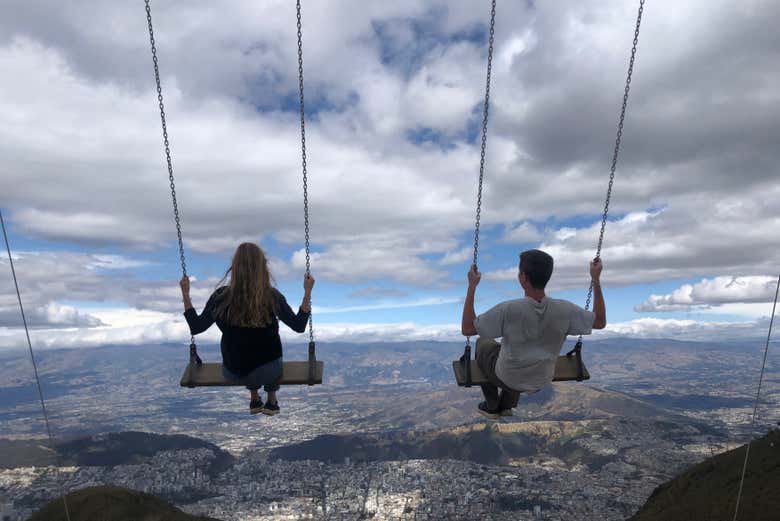For spectacular views over Quito’s mountainous landscape, hop aboard this sky tram, one of the world's highest aerial lifts, that takes passengers on a 2.5km ride (10 minutes) up the flanks of Volcán Pichincha to the top of Cruz Loma. Once you’re at the top (a mere 4100m), you can hike to the summit of Rucu Pichincha (4680m), a 4km (five-hour) round-trip – ask about the safety situation before attempting the climb and bring warm clothes.

Don’t attempt the hike to Rucu Pichincha until you’ve acclimatized in Quito for a couple of days. You can go alone or with a qualified guide. You can also hire horses ($15 per hour), which are about 500m from the upper station (follow signs to ‘paseos a caballo’). Visit the TelefériQo, and certainly begin the Rucu Pichincha hike, in the morning, when the views here are best; the clouds usually roll in by noon.
The
steep steps and narrow passageways leading to the top are not for the
faint-hearted or those scared of heights, but the views are spectacular and well worth the journey. Make
sure to go around to the side entrance in the courtyard for the
viewpoint entrance, which will cost you $2. The entry to the towers
isn’t inside the main church. There is also a café and tourist shop in one of the towers if you want to stop and have a coffee or beer.
Construction on this marvelously gilded Jesuit church began in 1605 but wasn't completed for another 160 years; the main altarpiece alone took 20 years (former president Gabriel García Moreno is buried here). The made-in-the-USA organ is circa 1889. Check out the chiaroscuro-style series of paintings called the 16 Prophets by Nicolás Javier de Goríbar and the large canvas Hell and Final Judgement from 1879 – it's still a mystery what happened to the original, painted by Hermano Hernando de la Cruz in 1620. Quiteños proudly call it the most beautiful church in the country, and it’s easy to see why.
El San Francisco is a Catholic basilica that stands in the middle of the historic center of Quito, in front of the square of the same name. It is the oldest and most significant religious site in Ecuador. The structure is the largest architectural complex within the historic centers of all of South America, and for this reason it was known as "El Escorial of the New World". Begun in 1537, San Francisco is considered a jewel of continental architecture for its mixture of different styles combined throughout more than 150 years of construction. San Francisco is part of the UNESCO World Heritage Site "City of Quito". The vast complex includes 13 cloisters, three churches, a plaza, more than 3,500 works of religious art, and a library holding thousands of books and historic documents. As the Convent friars brewed what is now considered IPA beer, we will enjoy a unique section of the museum dedicated to their very important work! Click to read about a recent Ecuador scientific beer discovery